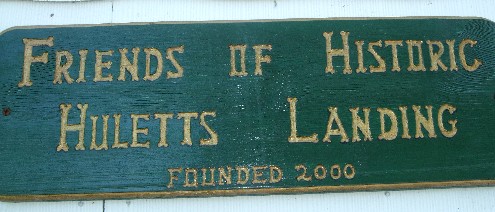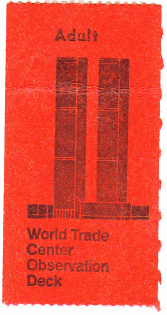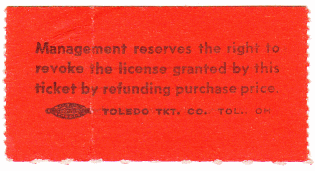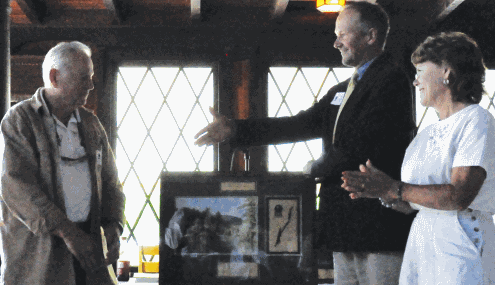“Good people do not need laws to tell them to act responsibly, while bad people will find a way around the laws.”
– Plato (427-347 B.C.)

News & Opinion About Huletts Landing, N.Y.
“Good people do not need laws to tell them to act responsibly, while bad people will find a way around the laws.”
– Plato (427-347 B.C.)
Ice Tea Anyone?
httpv://www.youtube.com/watch?v=uAHCineyHlk

For those unable to attend the Friends of Historic Huletts’ annual meeting held on August 28th, I have posted the minutes here.
I have placed a link to the “Final 2010 Interim Report on the Lake George Coliform Monitoring Program”. This is prepared by the Darrin Fresh Water Institute. This report summarizes their coliform tests throughout the 2010 season at a number of spots on Lake George.
“The Coliform Monitoring Program focuses on a series of locations that have shown chronically high levels of coliform bacteria in past years with routine surveillance sampling of other locations also included. For 2010, synoptic sampling of public bathing beaches on a two week basis is also included in the program. In addition to samples collected at the lake-shore, a series of samples are collected up the watershed by the Lake George Park Commission to locate and remediate specific sources of bacterial pollution.”
The locations in the town of Dresden that were sampled can be found on page 5 of the report.
In the email which accompanied this report, Mr. Lawrence Eichler of the Darrin Fresh Water Institute explains some of the heightened levels found at certain areas.
We collected additional samples in the south basin at Huddle Beach Brook and South Sawmill Bay Brook in Bolton. We have also collected samples with elevated bacterial levels in Lake George at East Brook at the outlet of Greens Pond. None of the FC/Enterococci ratios suggest a human source, however we will continue to monitor these location. The extensive wildlife populations present in wetland areas may account for bacteria present in these sites.
In the North Basin we collected additional samples at Cook Bay South Culvert, Temple Island Culvert, Stags Leap Brook, and Hearts Bay Culvert. A decaying goose carcass was removed from Stags Leap Brook and may account for the single elevated bacterial sample. A horse pasture is present in the drainage of the Hearts Bay Culvert, possibly accounting for the bacterial counts there. We will continue to monitor these sites and assist the Lake George Park Commission in on-site investigations at selected locations.
All beach samples continued to meet NYS DOH standards for contact recreation.
If you want to learn more about coliform levels in Lake George, read the entire report.
Cormorants Flock to Lake George
The Post Star had a good story on a bird problems.
87 Exit 6 Interchange Finished
I know a lot of people who come up from NY City stop here along the way. The Times Union reports the work is done.
Bolton Mountain May Be Purchased by Conservancy
The Post Star had an article on the Lake George Land Conservancy possibly buying a mountain in Bolton.
Super-stylish Houseboat Living in Germany
If you thought houseboats were ugly, check out Freshome.
Sometime in the mid-1970’s my father took me and my brothers to the World Trade Center. We went to the observation deck, stopped at Windows on the World, and generally had an outing for the day. I was probably 10 years old. I remember the spectacular views and how diverse the clientèle was at Windows on the World. It was a day that I’ll never forget. It was one of those places where most people from the NY metropolitan area would go at sometime in their life.
Well recently, I came across one of the tickets from the World Trade Center that we used that day. It says “Adult” so it may have been my father’s. It was at the bottom of an old box of childhood “stuff” that I was going through recently.
So I thought I’d share the actual ticket here.


The ticket is actually smaller than the scanned images above. I blew them up to get a better picture. It was certainly a poignant moment when I found the ticket and realized that that little piece of paper was all that was left from our visit to that wonderful and magnificent engineering marvel.
On this anniversary of September 11, 2001, let us remember those we lost, and let us also remember how we came together to help get America through one of the most difficult days in its history. Let us remember the heroism of the brave men and women who have fought for freedom in Afghanistan and Iraq. And let us all, never forget what happened that day.
Holy 50,000! Nigerian Ministry Wants to Build Big in Whitehall
The Post Star had one of the more interesting stories in recent memory about Whitehall.
Spread of Asian Claims Minimal in Lake George
It appears that the Asian claims in Lake George are contained right now. Read the Post Star.
Biggest Beach Bubbles Break
httpv://www.youtube.com/watch?v=UwAnBKeUS7U&

Buckley Bryan, Jr. (left) receives the Charles H. Tuttle Citation for conservation excellence, the Lake George Association’s highest honor, from LGA Executive Director Walt Lender and Julie Tuttle Currie. Given for the first time in 13 years, the award was presented to honor Buck’s many years of exemplary service, strong leadership, stalwart support, loyalty, generosity, and devotion to the protection of Lake George and the LGA, said Walter Lender, LGA executive director.
The Charles H. Tuttle Citation for conservation excellence was presented for the first time in 13 years to J. Buckley Bryan Jr., the outgoing board president of the Lake George Association, at its 125th Annual Meeting on August 20. The Tuttle Citation is the LGA’s highest honor.
“The award was given for Buck’s many years of exemplary service, strong leadership, stalwart support, loyalty, generosity, and devotion to the protection of Lake George and the LGA,” said Walter Lender, LGA executive director.
Buck Bryan became president of the Lake George Association for the first time in 1975 and served until 1980. While president during that period, Buck helped the LGA to:
– prevent the federal government from assuming control of the lake;
– stop the dumping of boat holding tanks into Lake George waters;
– hire the LGA’s first full-time staff; and
– increase membership in one year by over 800 members.
Thirty years later, after retiring from his career as an airline pilot and returning to the Lake full-time, Buck once again joined the LGA board. In his most recent tenure as president, Buck helped:
– upgrade the navigational markers on the lake;
– update and reprint the navigational charts, working with the LG Power Squadron;
– launch the largest Capital Campaign to preserve the Lake – the West Brook Conservation Initiative (WBCI);
– kick off the WBCI campaign with a lead gift of $50,000, which he has since matched; and
– launch the LGA’s Helen V. Froehlich Legacy Society. Buck announced his intentions to bequeath $1,000,000 of his estate to the LGA.
Buck has lead by example in other ways. On his lakefront property, Buck has installed stormwater management devices and a native vegetated buffer. He cleans out his sediment catchments with the LGA Catch Vac.
At the meeting, Tuttle’s descendents helped present a framed plaque to Buck, which incorporated a Loren Blackburn print of Glen Island looking north. Charles H. Tuttle was president of the LGA from 1927 to 1930 and remained its life-long counsel until his death in 1971. The award in his honor was established in 1970. During Tuttle’s tenure as president much of the important legislation concerning Lake George and its protection was passed. Most of this legislation was drafted and advocated for by Tuttle himself. Tuttle was twice appointed to the Lake George Park Commission and has lived on the Lake most of his life.

Enjoy the day off and please drive safely.
Many people have seen the old sundial which still sits in close proximity to where the first Huletts hotel stood. To the best of my knowledge, it still keeps pretty accurate time. As the summer draws to a close, I thought this might make an interesting post.
Wikipedia has a long description about sundials here but I present the “short version” below.
A sundial is a device that measures time by the position of the Sun. In the most common design, the sun casts a shadow from its Gnomon, a thin, straight edge onto a flat surface marked with lines indicating the hours of the day. As the sun moves across the sky, the shadow-edge progressively aligns with different hour-lines. Such designs rely on the Gnomon being aligned with the axis of the Earth’s rotation. For a sundial to work correctly in the northern hemisphere, the Gnomon must point towards true north (not the north magnetic pole) and the Gnomon’s angle with horizontal must equal the sundial’s geographical latitude. Huletts Landing’s latitude is 43.6392326355 degrees.
The shadow-casting Gnomon must be in a fixed position and aligned with the Earth’s rotational axis. It must be oriented with true North, making an angle with the horizontal equal to the sundial’s geographical latitude. This axis can only be aligned with the celestial north pole, which is closely aligned with the (present) North star, Polaris. In other words, it can’t be positioned with a compass, it must be positioned with the North star.
If the shadow-casting gnomon is aligned with the celestial north pole, its shadow will revolve at a constant rate, and this rotation will not change with the seasons. That’s why a sundial works through all seasons of the year.
So while I don’t know the year the sundial was put in place, I can say with some certainty that it was positioned at night and those putting it into place stopped and found the North star. Our proof is that it still works today.
So as Labor Day brings this summer to a close, have a great break and a good rest.

A new public informational flyer about Asian clam, an invasive species identified in Lake George for the first time this August, has been released. The flyer explains how citizens can help to identify and prevent the spread of this clam. The flyer is available here.
Designed specifically for Lake George, the flyer will help the general public discern the Asian clam from the native mollusks that live in Lake George and pose no threat. The Asian clam is a very small and round bi-valve. It is typically less than 1.5 inches in size, and can spread rapidly. A single clam can reproduce alone, and can release hundreds of juveniles per day. The biggest problem Asian clams have caused in other water bodies is biofouling – or clogging of water intake pipes.
Officially known as Corbicula fluminea, the Asian clam is native to southern Asia, the eastern Mediterranean and Australia. The Darrin Fresh Water Institute found it off Lake Avenue beach in Lake George Village on August 19. Up to 600 clams per square meter were documented, covering an area of approximately 2.5 acres.
Spearheaded by the Darrin Fresh Water Institute, a committee has formed to coordinate response efforts. Representatives from the Darrin Fresh Water Institute, Lake George Park Commission, Lake George Association, FUND for Lake George, NYS Department of Environmental Conservation, Adirondack Park Agency, Adirondack Park Invasive Plant Program, and Lake Champlain Basin Program are working together to pool resources and expertise. Their next step is to determine the extent of the spread of the clam, map the extent of the invasion, and then weigh options for eradication or management. The hope is that the infestation has been discovered soon enough to successfully eradicate it.
The public is asked to look for the clams in sandy or gravelly bottom areas of Lake George, in shallow, warm water; this is the clam’s preferred habitat. If a clam is found that matches the description of the Asian clam, citizens are asked to get a sample or take a photograph and call the Lake George Association at 518-668-3558.
In addition, the public can avoid spreading the Asian clam, as well as other invasive species, by following these guidelines whenever leaving a waterway:
Check and remove any visible mud, plants, fish or organisms from boats, trailers, equipment, clothing, dogs, etc.
Clean and eliminate water from equipment. Be sure to drain all water, including live wells and bait buckets.
Do not use Asian clams as bait.
Dry anything that comes in contact with the water.
Never release plants, fish, or other animals into a waterway unless they come from that waterway.
Print out, distribute, and post the informational flyer in your place of business.

Congratulations to Nicholas Mir who hit a hole-in-one of the 2nd hole of the Huletts Golf Course on Thursday, August 19th.
Using an 8 iron on the 2nd hole during a late afternoon round, he recounted the event in an email to me.
“I was with my dad and he actually called it in mid-air, he said “This one is going to look good in the newspaper.” It landed just short of the pin, bounced a couple of times and went right in. It took both of us a couple seconds to realize what had happened but when we did we were both pretty excited. He has now seen me get a hole in one as well as my sister who was only 8 years old at the time. It was the perfect scenario for my first hole in one, I was at my favorite place on earth with my dad, the man who taught me how to play the game, I wouldn’t have had it any other way.”
Congratulations Nick Mir! Thanks for sharing your accomplishment!

LGA lake saving projects, like the dry well installation at Bixby Beach shown here, are made possible in part through funding support from the Helen V. Froehlich Foundation.
Lake George, NY – August 30, 2010 – The Lake George Association announced today that the Helen V. Froehlich Foundation has awarded the 125-year old conservation organization a grant of $378,500 for lake-saving initiatives. This is the LGA’s seventeenth consecutive award from the Froehlich Foundation. This grant award will provide $174,500 toward lake saving projects, $56,000 toward education and outreach programs, and $123,000 toward lake quality programs, including Citizen Science and the Citizens Statewide Lake Assessment Program, Invasive Species Management, and Lake Stewards.
“The LGA is grateful for the Foundation’s continuing support, as well as their vote of confidence in the LGA and our efforts to protect the Lake and its watershed for future generations,” said Walt Lender, the LGA’s executive director.
Nearly half of the total grant award will provide funding for the LGA’s Lake Saving Projects. These construction projects improve Lake George’s water quality by preventing sediment and pollutants from entering the lake. “The funds in the grant award, leveraged with our members and donors generosity, put us in a strong position to receive significant funding from public sources, which in turn, extends our ability to complete more projects to protect the Lake,” he said.
The LGA’s popular Floating Classroom program will receive $23,000 to help teach lake science and watershed management to area students. Over 1,000 area students benefit each year from the LGA’s Education and Outreach programs, which are provided free of charge through grants like the one provided by the Froehlich Foundation.
LGA staff also educates homeowners, businesses, municipalities and landscapers about improving water quality by installing vegetative buffers, reducing lawn size and non-permeable surfaces, controlling stormwater runoff through rain gardens and rain barrels, and using no-phosphorus fertilizer and native plant species in landscaping.
The 17 consecutive grant awards from the Froehlich Foundation represent over $5 million dollars worth of improvements to Lake George and the watershed.
Established in 1885, the Lake George Association is America’s first lake association and a pioneer in the conservation movement. The LGA spent over $900,000 in 2009 to carry out its mission to protect Lake George. In addition to the funding from the Froehlich Foundation, the LGA relies on income from membership support and fundraising events.
The annual
CHAPEL OF THE ASSUMPTION
Labor Day Drawing
Saturday, September 4th, 2010
at the Huletts Landing
Labor Day Weekend Community Picnic
GRAND PRIZE:
greens fees & carts for four
at the SAGAMORE RESORT
plus $100 CASH!
PLUS 18 ADDITIONAL PRIZES
A combined cash value of $1000!
More prizes than any Chapel drawing ever!
$5 per chance
$25 for six
Winner need not be present at drawing to claim prize
ALL PROCEEDS GO TO IMPROVEMENTS TO THE
CHAPEL OF THE ASSUMPTION
HULETTS LANDING
To enter:
Print out raffle tickets here.
Return to:
Chapel of the Assumption
PO Box 196
Huletts Landing, NY 12841